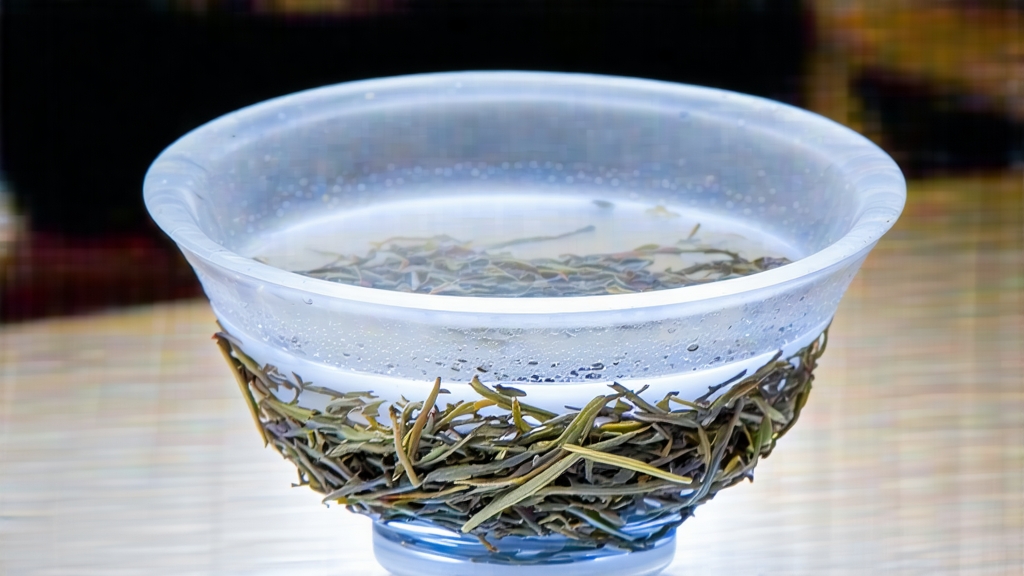
Tucked high on the forested ridges of southern Yunnan, where the Tropic of Cancer brushes the clouds, a tea has been quietly absorbing moonlight for more than a century. Locals call it Yue Guang Bai—“White Moonlight”—a name that sounds romantic yet accurately describes the way the leaves are withered under cool, starlit skies rather than the fierce Yunnan sun. Foreign drinkers often mistake it for a Fujian white because it shares the same minimal processing philosophy, but one sip reveals a personality all its own: broader leaves, a deeper amber liquor, and a honeyed fragrance that lingers like late-summer hay.
The origin story is part history, part legend. In the late Qing dynasty, caravan traders transporting Pu-erh cakes from Jinggu to Dali noticed that tea picked during the rainy season refused to dry properly. Rather than risk mold, the tea masters spread the leaves on bamboo trays inside drafty barns and let the mountain breeze finish the job overnight. The resulting tea tasted unexpectedly mellow, with none of the green astringency typical of fresh Yunnan maocha. When word reached the Imperial tea bureau in Kunming, officials christened the moon-withered leaf “bai hao yue guang”—white down, moonlight—and levied it as tribute. Production remained tiny until the early 2000s, when specialty buyers searching for white teas beyond Fujian rediscovered the style and encouraged mountain cooperatives to revive the old craft.
Botanically, Yue Guang Bai is built on Yunnan’s indigenous Da Ye (large-leaf) cultivar, the same genetic stock that gives Pu-erh its gutsy character. The leaves are huge—often twice the length of a typical Fujian white tip—coated in a downy wax that reflects light like frost. This natural sunscreen allows the plant to thrive at elevations between 1,600 and 1,900 m, where UV is intense but nights are cool. The combination of altitude, old-growth forest shade, and volcanic laterite soil produces a leaf chemistry unusually rich in polyphenols and long-chain amino acids, precursors to the tea’s signature sweetness.
Crafting White Moonlight is a race against humidity. Picking begins at dawn during the first two weeks of April, when ambient moisture is still high but the sun has not yet scorched the leaf surface. Pluckers take only the standard “one bud, two leaves” set, selecting shoots that have unfurled within the previous 48 h. The fresh leaf is immediately transported to the withering loft—an open-walled pavilion built on stilts above a dry ravine—where it is spread 2 cm deep on rattan trays. For the next 36 to 48 h the leaves rest in darkness, cooled by katabatic winds that slide down the mountain after sunset. During this moon-withering phase enzymatic oxidation proceeds slowly; the leaf edges turn chestnut while the midrib stays silvery green. Masters gauge readiness by sound: a gently squeezed bud should emit a faint crackle, like thin ice. Once the moisture content drops to roughly 45 %, the leaf is given a brief “sunbath” of no more than 20 min at 8 a.m., just enough to fix the aromatics without caramelizing sugars. Finally, the tea is stacked no thicker than 5 cm and allowed to air-dry indoors for another day, until it reaches 8–9 % moisture. No rolling, no pan-firing, no charcoal baking—Yue Guang Bai is white tea in its most undressed form.
The finished maocha is a study in chiaroscuro: silver buds, dark olive leaves, and the occasional russet edge, all dusted with a pollen-like bloom. When shipped to pressing houses, the loose leaf may be lightly steamed and compressed into 100 g “moon cakes,” but connoisseurs prefer the loose version for its superior aromatics. Proper storage calls for breathable clay jars kept in a room where the temperature swings no more than 5 °C between day and night; under these conditions the tea will darken gradually, trading fresh lychee notes for dried apricot and sandalwood without ever surrendering its core brightness.
Brewing White Moonlight rewards patience and restraint. A 150 ml gaiwan is ideal; use 4 g of leaf and 85 °C water for the first five infusions, then nudge the temperature up to 90 °C